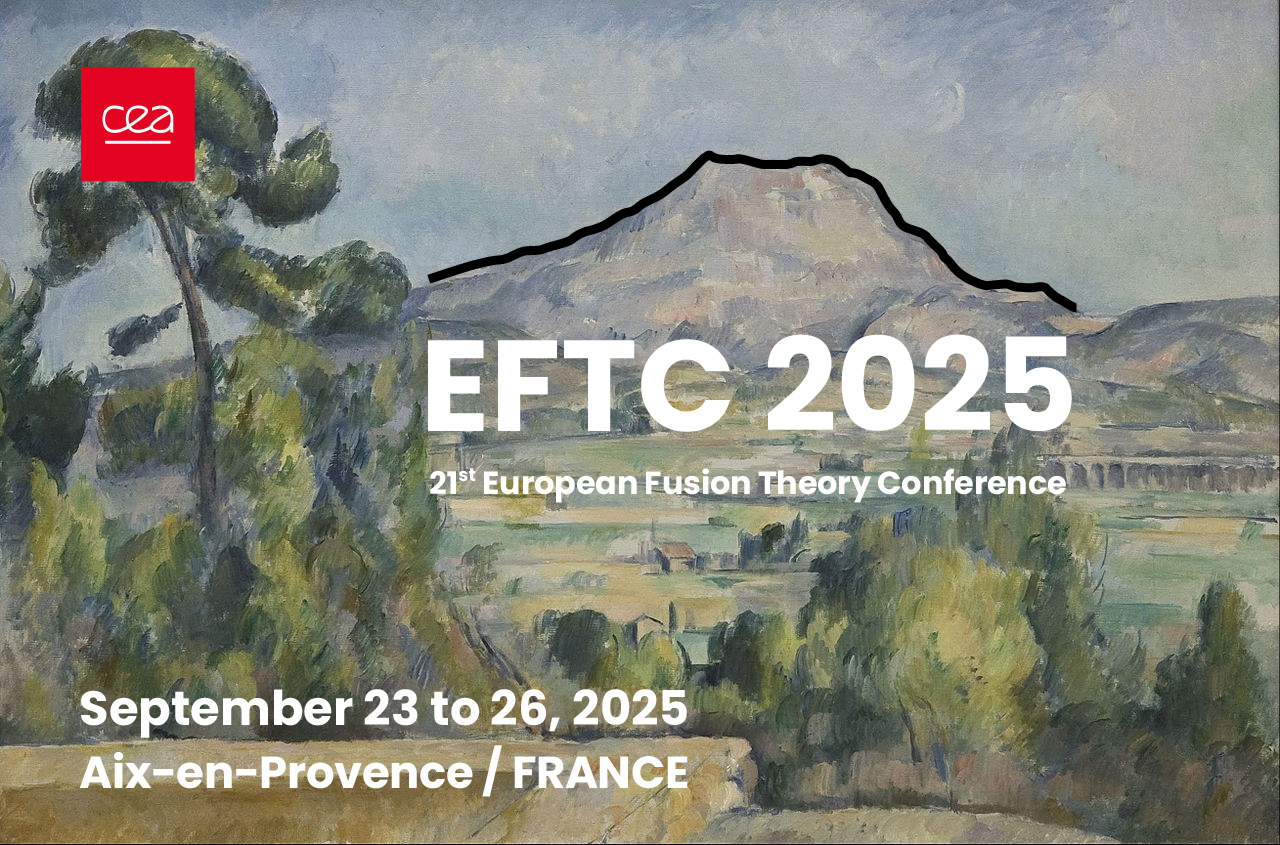Description
For the Poster list please click on 'Contribution list' down here
Turbulent transport represents one of the major topics in plasma physics, especially taking into account its impact on the performance of nuclear fusion devices. However, modelling turbulence requires long-time highly resolved simulations to capture the fine spatial and temporal scales, making it numerically intensive. The use of surrogate models might represent a good compromise between...
Disruptions, i.e. major instabilities in which plasma confinement is lost, are a significant threat to tokamak operation. During a disruption, the resistivity of the plasma increases as the thermal energy is quickly lost, causing the current to decrease. Due to the self-inductance of the plasma this leads to the generation of a strong parallel electric field. As the friction force experienced...
A disrupting plasma in a high-performance device such as ITER and SPARC may generate
large runaway electron (RE) currents that, upon impact with the tokamak wall, can cause
serious damage to the device. To quickly identify regions of safe operation in parameter
space, it is useful to develop reduced models and analytical criteria that predict when a
significant fraction of the Ohmic...
In stellarators, the absence of axisymmetry poses challenges for confinement, as particle orbits are more prone to drift losses. Quasisymmetry [1] offers a pathway to overcome this limitation by optimizing the magnetic field configuration to approximate the favorable confinement of axisymmetric systems. Nevertheless, traditional stellarator designs often involve high aspect ratios and...
Sheath boundary conditions are an unavoidable fact of fluid based Scrape-Off Layer (SOL) modelling. The choice of boundary conditions can dictate the equilibrium that is reached, this choice is usually the Bohm criterion [1]. Recent work by Li et al [2,3,4] proposed a novel boundary condition, in the form of a correction to the Bohm criterion, for modelling based on 1D Particle In Cell (PIC)...
Gyrokinetic codes are currently the most advanced numerical tools for simulating turbulence in to-kamak plasmas. The code Gysela [1], written in Fortran 90 and developed for more than 20 years, is one of the flux-driven gyrokinetic codes available worldwide. However expanding this code to use more complex mathematical methods such as non-uniform points (vital for handling the different...
Neutral Beam Injection (NBI) and Ion Cyclotron Resonance Heating (ICRH) are two key systems that generate a population of Energetic Particles (EPs) in magnetically confined fusion plasmas. These EPs play a crucial role in plasma performance, providing heat, torque and non-inductive current. Furthermore, beam EPs are excellent candidates for studying wave–particle interaction phenomena...
New plasma current ramp up (RU) scenario has been developed recently on TCV to demonstrate for the first time the possibility to raise the plasma current (Ipl) non-inductively (i.e. with zero flux contribution from the central solenoid) by applying ECCD in the early discharge phase after the break down [1]. Similar strategy has been tested previously in the non-inductive (NI) RU scenario fully...
Pellet refuelling will be a key technique for sustaining plasma density in future fusion reactors based on the stellarator concept. Although this method is more mature in tokamak experiments, the departure from axisymmetry in stellarators introduces unique challenges and opportunities that remain poorly understood.
Here, the stellarator extension of the 3D nonlinear MHD code JOREK is used...
Guiding Center (GC) orbits in shaped tokamak equilibria exhibit rich structure, once the magnetic field magnitude develops secondary local minima. Using Negative Triangularity (NT) and small aspect ratio equilibria we show that shaping-induced wells in B introduce additional mirror points and, consequently, multiple families of trapped orbits. Two generic bifurcation scenarios are identified...
Understanding plasma behaviour in the scrape-off layer (SOL) is critical for predicting particle and energy exhaust in magnetically confined fusion devices. A key feature in the SOL is magnetic flux expansion, which reduces peak heat loads on divertor targets by spreading exhaust across a larger surface area. This phenomenon is typically modelled using fluid codes, which incorporate flux...
High confinement mode operation of tokamaks is inevitably linked to edge localized mode (ELM) instabilities. Larger tokamaks like ITER will be severely threatened by their occurrence as they are associated with large transient heat loads that exceed material limits. Applying 3D resonant magnetic perturbations (RMP) is a possible means to suppress ELMs. However, so far RMP ELM suppression was...

